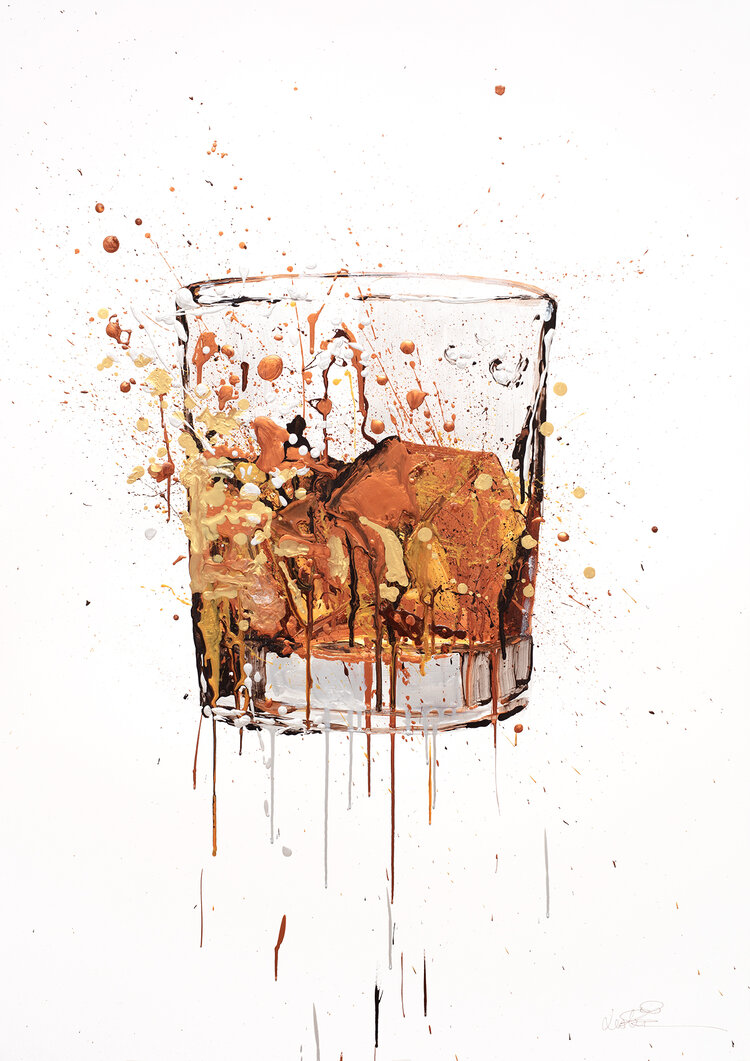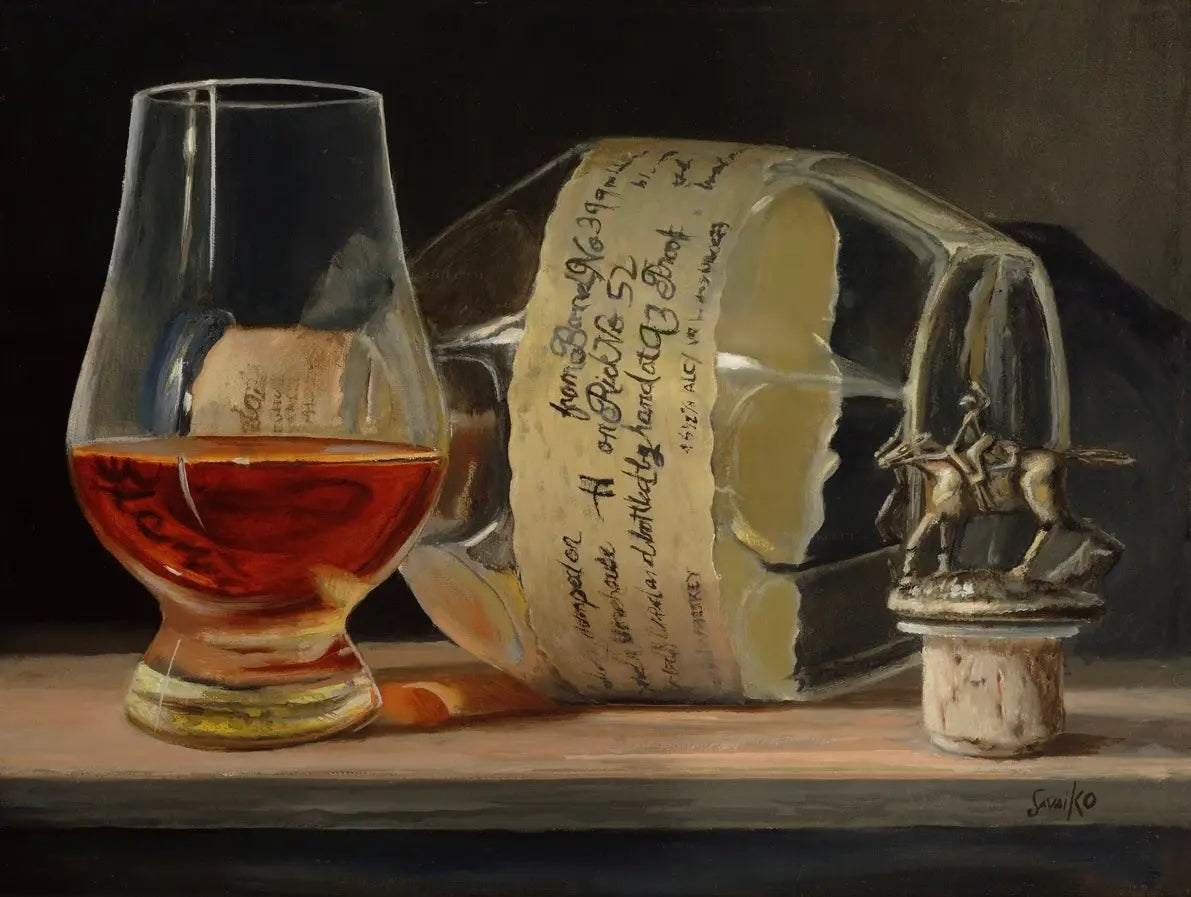Bourbon Art in Contemporary Culture: Where Practice Fulfills Technology
Bourbon Art in Contemporary Culture: Where Practice Fulfills Technology
Blog Article
The Value of Whiskey Art in Celebrating Heritage and Workmanship in the Beverage Sector
The complex connection in between whiskey art and the event of heritage and craftsmanship within the drink industry can not be overemphasized. Through attentively made labels and containers, bourbon brand names envelop their historic roots and the artisanal skills that specify their production approaches. This artistic measurement not just boosts market allure however additionally offers as a conduit for social narration, cultivating a much deeper link between the craft and the consumer. As we discover the different aspects of this subject, interesting inquiries concerning the influence of modern trends on conventional practices arise, prompting further evaluation.
The Historic Roots of Whiskey
At the heart of whiskey's appeal exists an abundant tapestry of historical roots that map back to ancient people. The origins of scotch can be linked to the distillation techniques of the Sumerians and Babylonians around 2000 BCE, where early kinds of fermented grain drinks began to arise. It was in the Middle Ages that the art of distillation progressed dramatically, particularly in Ireland and Scotland, leading to the development of bourbon as we understand it today.
The term "scotch" itself stems from the Gaelic word "uisce beatha," indicating "water of life." This expression emphasizes the cultural significance of bourbon in Celtic cultures, where it was typically related to routines, celebrations, and communal bonding. By the 15th century, distillation ended up being an acknowledged craft within reclusive communities, paving the method for the establishment of lawful distilleries.
As profession paths expanded, whiskey's appeal expanded, transcending regional limits and capturing the interest of aficionados worldwide. Realism Art. This historic trip shows not just the workmanship behind whiskey production but additionally its integral function in social and social contexts, noting it as a considerable beverage throughout background
Artistic Expression in Branding
Scotch branding stands as an engaging intersection of artistry and commerce, where aesthetic identity plays a critical role in forming consumer understanding. The aesthetic appeals of bourbon labels, packaging, and marketing products show not only the brand name's story yet likewise its core worths and heritage. Via imaginative expression, distilleries share a narrative that resonates with customers, stimulating emotions and sparking connections.
The usage of color, typography, and images in branding serves to differentiate items in a saturated market. Standard themes may evoke a feeling of credibility and workmanship, while contemporary designs can indicate advancement and forward-thinking. This calculated creative direction boosts brand acknowledgment and commitment, allowing customers to create an individual connection with the scotch they choose.
In addition, artistic expression in branding usually offers as a celebration of regional heritage. Distilleries regularly integrate local signs or historical referrals into their layouts, developing a sense of location that welcomes customers to take part in a more comprehensive cultural experience. Inevitably, the creativity behind bourbon branding not just improves visual charm yet also enhances the general story of the brand, cultivating a much deeper gratitude for the craftsmanship and heritage embedded in each bottle.
Craftsmanship in Bottle Style
The artistry apparent in scotch branding prolongs past visual identity to encompass the workmanship entailed in container layout. Each container functions as a vessel not simply for the spirit within, yet also for go right here the tale it outlines its origin, custom, and quality. The style process requires meticulous focus to detail, as components such as material, shape, and closure add significantly to the total perception of the bourbon.
Workmanship in bottle layout involves picking high-quality glass that can boost the whiskey's shade and clearness, while likewise giving a tactile experience for the consumer. The silhouette of the bottle have to be both cosmetically attractive and practical, frequently showing the heritage of the brand name. Several distilleries select special forms or printed logo designs that stimulate a sense of credibility and history.
Furthermore, the tag layout and typography play a crucial duty in connecting the brand name's story. Whiskey Art. A well-crafted container not only mesmerizes the customer's eye yet additionally enhances the brand's commitment to top quality and practice. This way, the workmanship of bottle layout ends up being an important aspect of the bourbon experience, merging creativity with an extensive respect for heritage
Cultural Significance of Bourbon Art
Commemorating custom and workmanship, the cultural relevance of scotch art transcends mere looks, intertwining with the social and historic narratives of the regions from which it originates. Each container acts as a canvas, showing the special stories, mythology, and practices that have use this link shaped regional whiskey-making techniques. The intricate styles usually show the heritage of the distillers, incorporating icons and motifs that reverberate with the culture and worths of their neighborhoods.

Additionally, whiskey art plays a crucial role in public events and celebrations, working as a tangible web link between individuals and their shared experiences. By valuing the virtuosity in whiskey product packaging, consumers cultivate a much deeper understanding and respect for the craft, inevitably improving their satisfaction of the drink itself.
Modern Trends in Bourbon Discussion
In recent times, the discussion of whiskey has actually evolved to mirror contemporary tastes and trends while still honoring standard workmanship - Realism Art. Distilleries are progressively focusing on visual components that improve the overall drinking experience, linking the void between heritage and modernity
Innovative bottle styles have actually arised, usually including sustainable materials and imaginative tags that tell compelling tales. Several brand names now team up with regional musicians, instilling their items with one-of-a-kind visual expressions that resonate with customers. Additionally, limited-edition launches are frequently packaged in collectible containers, adding worth and allure for lovers.

Final Thought
In verdict, bourbon art offers as an important channel for sharing the heritage and workmanship inherent in the beverage sector. Via intricate branding, innovative container designs, and culturally significant imaginative elements, scotch brands efficiently recognize their practices and link with consumers.


Workmanship in bottle style entails selecting top notch glass that can enhance the bourbon's shade and quality, while additionally supplying a tactile experience for the consumer. In this means, the workmanship of container style ends up being an important aspect of the scotch experience, combining creativity with a profound regard for heritage.
In final thought, whiskey art serves as a vital avenue for sharing the heritage and workmanship fundamental in the drink sector.
Report this page